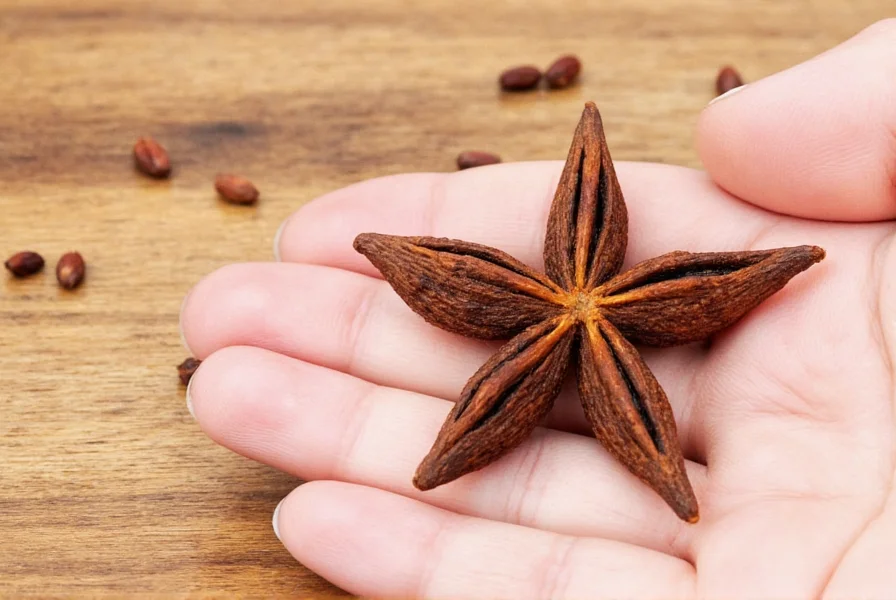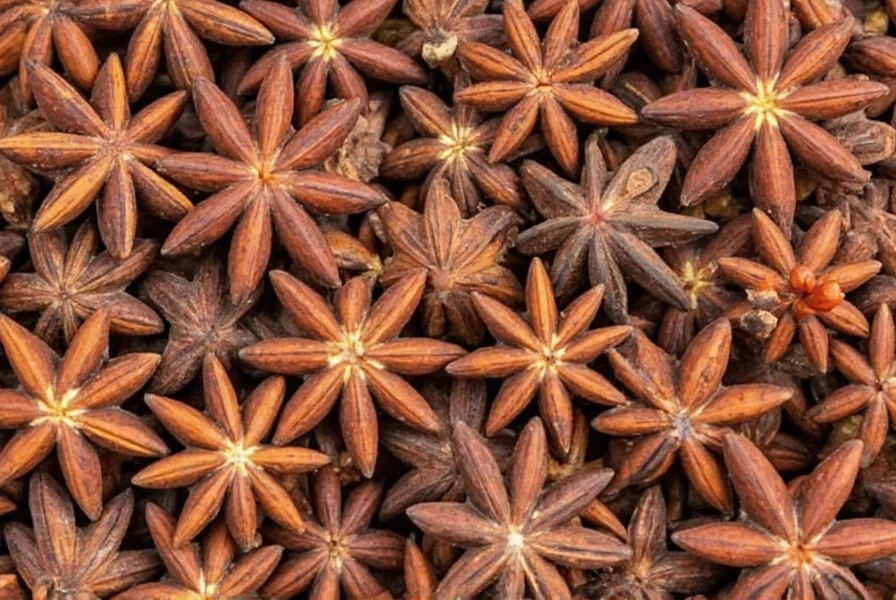Star anise has been a staple in traditional Chinese and Ayurvedic medicine for centuries, but modern science is now validating many of its purported health benefits. This distinctive spice, harvested from the fruit of the evergreen Illicium verum tree native to Southeast Asia, offers a complex profile of bioactive compounds that contribute to its therapeutic potential.
Understanding Star Anise: More Than Just a Spice
Despite its name, star anise isn't related to anise seed but earns its name from the similar licorice-like flavor profile. The spice gets its name from the distinctive eight-pointed star shape of its fruit pods. Chinese star anise (Illicium verum) is the safe, culinary variety, while Japanese star anise (Illicium anisatum) contains toxic compounds and should never be consumed. Always ensure you're using the Chinese variety from reputable sources.

Scientifically Supported Health Benefits of Star Anise
Research has identified several evidence-based benefits of incorporating Chinese star anise into your diet or wellness routine:
Powerful Antioxidant Properties
Star anise ranks among the most antioxidant-rich spices, containing linalool, limonene, and various polyphenols. A 2020 study published in the Journal of Food Science and Technology found star anise extract demonstrated higher antioxidant capacity than many common spices, helping neutralize free radicals that contribute to cellular damage and chronic disease development.
Natural Antimicrobial and Antifungal Effects
The essential oil of star anise shows significant activity against various pathogens. Research in Phytotherapy Research demonstrated effectiveness against Candida albicans and other fungal strains. The compound anethole disrupts microbial cell membranes, making star anise a potential natural alternative for combating certain infections when used appropriately.
Respiratory Health Support
Traditional medicine has long used star anise for coughs and respiratory ailments. Modern research supports this application, with studies showing star anise extract may help relax bronchial muscles and reduce inflammation in airways. The spice's expectorant properties can help loosen mucus, making it valuable for managing symptoms of colds and bronchitis.
Digestive System Benefits
Star anise stimulates digestion by increasing gastric secretions and promoting healthy gut motility. It may help alleviate bloating, gas, and indigestion. Some research suggests compounds in star anise could support a healthy gut microbiome, though more human studies are needed in this area.
| Key Compound | Concentration in Star Anise | Primary Health Benefits |
|---|---|---|
| Anethole | 80-90% of essential oil | Antimicrobial, anti-inflammatory, estrogenic effects |
| Linalool | 2-5% of essential oil | Antioxidant, calming properties, neuroprotective effects |
| Limonene | 1-3% of essential oil | Digestive support, antioxidant, potential anticancer properties |
| Shikimic Acid | 3-7% of dried fruit | Antiviral properties, precursor to oseltamivir (Tamiflu) |
Star Anise in Traditional Medicine vs. Scientific Evidence
While traditional medicine systems have used star anise for various purposes, it's important to distinguish between traditional applications and scientifically verified benefits. Traditional Chinese Medicine has employed star anise for:
- Warming the body and improving circulation
- Alleviating abdominal pain
- Treating hernias and kidney issues
- Supporting postpartum recovery
Modern research provides varying levels of support for these applications. While the antimicrobial and digestive benefits have stronger scientific backing, some traditional uses require more rigorous human studies to confirm efficacy.
How to Safely Incorporate Star Anise Into Your Routine
There are several practical ways to benefit from star anise while minimizing potential risks:
Culinary Applications
The safest way to enjoy star anise benefits is through culinary use. Add whole pods to:
- Broths and soups (remove before serving)
- Baked goods for subtle licorice flavor
- Tea blends (1 pod per 8oz water)
- Spice rubs for meats
Star Anise Tea Preparation
To make therapeutic star anise tea:
- Boil 1-2 cups of water
- Add 1-2 whole star anise pods
- Simmer covered for 10-15 minutes
- Strain and optionally add honey or lemon
- Enjoy up to 2 cups daily for respiratory or digestive support

Important Safety Considerations and Contraindications
While Chinese star anise is generally safe when used in culinary amounts, certain precautions are essential:
- Never confuse with Japanese star anise - The Japanese variety (Illicium anisatum) contains toxic compounds that can cause severe neurological symptoms
- Pregnancy concerns - Star anise contains compounds with estrogenic effects; pregnant women should avoid medicinal amounts
- Infant safety - Star anise tea has been linked to neurological issues in infants; never give to children under 2 years
- Medication interactions - May interact with blood thinners and hormone-sensitive medications
- Allergy considerations - Those with allergies to plants in the Magnoliaceae family may react to star anise
Always consult with a healthcare provider before using star anise for medicinal purposes, especially if you have underlying health conditions or take prescription medications.
Conclusion: Balancing Tradition and Science
Star anise offers a compelling blend of traditional wisdom and emerging scientific validation. Its antioxidant, antimicrobial, and anti-inflammatory properties make it a valuable addition to a health-conscious lifestyle when used appropriately. The key is understanding that culinary use is generally safe while medicinal applications require more caution and professional guidance. As research continues to explore the full potential of this ancient spice, we gain better insight into how to harness its benefits while respecting its limitations and potential risks.
Frequently Asked Questions
What's the difference between Chinese and Japanese star anise?
Chinese star anise (Illicium verum) is the safe, edible variety with reddish-brown color and sweet licorice flavor. Japanese star anise (Illicium anisatum) is toxic, with a sharper point on each pod segment and a more bitter taste. Never consume Japanese star anise as it contains knullidine which can cause severe neurological symptoms.
Can star anise help with menopausal symptoms?
Some research suggests star anise may offer mild relief for menopausal symptoms due to its phytoestrogen content, particularly anethole. However, evidence is limited to preliminary studies, and those with hormone-sensitive conditions should consult their healthcare provider before using star anise medicinally.
How much star anise is safe to consume daily?
For culinary use, 1-2 whole pods per day is generally considered safe for adults. When preparing tea, limit to 1-2 pods steeped in 8-16 ounces of water, with no more than 2 cups daily. Medicinal doses should only be taken under professional guidance as concentrated extracts may cause side effects.
Does star anise have antiviral properties?
Yes, star anise contains shikimic acid, which is used in the production of the antiviral medication oseltamivir (Tamiflu). Research shows star anise extract demonstrates activity against certain viruses, though more studies are needed to determine its effectiveness against specific viral infections in humans.
Can I grow star anise at home?
Chinese star anise can be grown in USDA zones 7-10 as a slow-growing evergreen tree that reaches 20-30 feet. It requires well-drained soil, partial to full sun, and protection from strong winds. The tree takes 6-10 years to produce fruit, and proper identification is crucial to avoid confusion with toxic varieties.











 浙公网安备
33010002000092号
浙公网安备
33010002000092号 浙B2-20120091-4
浙B2-20120091-4